Wellness
Clinic Wellness Team. A key factor to spine or back pain conditions is staying healthy. Overall wellness involves a balanced diet, appropriate exercise, physical activity, restful sleep, and a healthy lifestyle. The term has been applied in many ways. But overall, the definition is as follows.
It is a conscious, self-directed, and evolving process of achieving full potential. It is multidimensional, bringing together lifestyles both mental/spiritual and the environment in which one lives. It is positive and affirms that what we do is, in fact, correct.
It is an active process where people become aware and make choices towards a more successful lifestyle. This includes how a person contributes to their environment/community. They aim to build healthier living spaces and social networks. It helps in creating a person’s belief systems, values, and a positive world perspective.
Along with this comes the benefits of regular exercise, a healthy diet, personal self-care, and knowing when to seek medical attention. Dr. Jimenez’s message is to work towards being fit, being healthy, and staying aware of our collection of articles, blogs, and videos.

by Dr Alex Jimenez DC, APRN, FNP-BC, CFMP, IFMCP | Diets, Fitness
Regular exercise is potent medicine for older adults with heart disease, a new American Heart Association scientific statement says.
Physical activity should be a key part of care for older adults with heart disease who want to reduce their symptoms and build their stamina, said geriatric cardiologist Dr. Daniel Forman. He’s chair of the panel that wrote the new statement.
“Many health-care providers are focused only on the medical management of diseases — such as heart failure, heart attacks, valvular heart disease and strokes — without directly focusing on helping patients maximize their physical function,” Forman said in a heart association news release.
Yet, after a heart attack or other cardiac event, patients need to gain strength. Their independence may require the ability “to lift a grocery bag and to carry it to their car,” said Forman, a professor of medicine at the University of Pittsburgh Medical Center and VA Pittsburgh Healthcare System.
“Emphasizing physical function as a fundamental part of therapy can improve older patients’ quality of life and their ability to carry out activities of daily living,” he added.
And, no one is too old to get moving. “Patients in their 70s, 80s and older can benefit,” Forman said.
Cardiac rehabilitation is a crucial tool for elderly patients, providing exercise counseling and training to promote heart health, and manage stress and depression. But Forman said it’s not prescribed often enough.
“When treating cardiac patients in their 70s, 80s and 90s, health-care providers often stress medications and procedures without considering the importance of getting patients back on their feet, which is exactly what cardiac rehabilitation programs are designed to do,” he noted.
Daily walking and tackling more chores at home also can be helpful, Forman said. Resistance training and balance training can help prevent falls. Tai chi and yoga employ strength, balance and aerobic features, he explained.
The statement also outlines ways for heart doctors to assess patients’ levels of physical functioning.
The statement was published March 23 in the journal Circulation.
Heart disease in older Americans is a growing concern because the number of people 65 and older in the United States is expected to double between 2010 and 2050.

by Dr Alex Jimenez DC, APRN, FNP-BC, CFMP, IFMCP | Diets, Fitness
Pediatricians have long suggested that fruit juice may prompt weight gain in children, but a new review finds it harmless when consumed in moderation.
“Based on the current evidence, we didn’t find that consuming one serving [of 100 percent fruit juice] a day contributes to weight gain in children,” said study author Dr. Brandon Auerbach. He is acting instructor of medicine at the University of Washington, in Seattle.
To come to that conclusion, the investigators analyzed the results of eight published studies involving over 34,000 children that looked at fruit juice intake and the effect on weight.
Children under the age of 6 who drank a serving a day gained a small amount of weight, but not enough to be clinically significant, the findings showed.
The amount was truly tiny, less than a pound over a year’s time, Auerbach noted. And the review did not prove that fruit juice consumption caused the weight gain.
In addition, children aged 7 to 18 who drank a serving a day saw no clinical effects on weight, the researchers said.
The younger children favored apple juice, while the older ones were more likely to drink orange juice. The study authors explained that orange juice, which has a lower glycemic index, may be linked with less weight gain. Food and drink with a lower glycemic index are linked with lower and slower rises in blood sugar levels.
The researchers stressed that their report specifically focused on 100-percent fruit juice, not fruit-flavored drinks or fruit sodas.
Senior study author, Dr. James Krieger, is executive director of Healthy Food America. He said, “The evidence on weight gain, diabetes [risk] and other health conditions for [drinking] sugar-sweetened beverages — like soda and fruit drinks — is very solid.”
What has been debated, according to Krieger, is whether sugar in 100-percent fruit juice is linked with the same health effects.
For now, Krieger and Auerbach said, they advise parents to follow the American Academy of Pediatrics’ recommendations for 100-percent fruit juice consumption: 4 to 6 ounces a day for children aged 6 and younger, and 8 to 12 ounces a day for kids aged 7 to 18.
Connie Diekman, director of university nutrition for Washington University in St. Louis, said that the new findings put the issue in perspective.
“Concerns around childhood obesity have caused many to try to find ‘the food’ that is the cause,” Diekman explained.
“This study did a nice job in assessing the impact of 100-percent fruit juice on weight, a food often blamed for the growing incidence of childhood obesity,” she said.
“As a registered dietitian, this study reinforces the messages I provide my clients: 100-percent fruit juice — not fruit drinks or beverages — can fit into a healthful eating plan. But it is important, as with all foods, to learn portion sizes,” Diekman stressed.
“In addition, I always remind people that whole fruit — whether fresh, frozen or canned — can provide more satiety since we don’t seem to recognize fullness from liquids, while we do from solids,” she said.
The study was published online March 23 in the journal Pediatrics.
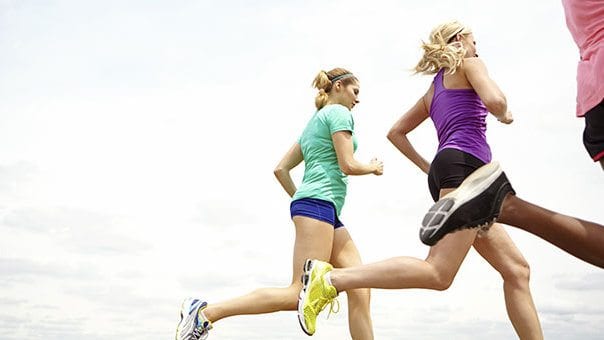
by Dr Alex Jimenez DC, APRN, FNP-BC, CFMP, IFMCP | Fitness, Health, Wellness
If you like to run but don�t looove to run, here�s some news that�s sure to put a bounce in your step. A recent review of studies found that to score the major health perks of running, you don�t have to pound the pavement for long: Jogging just five or six miles a week is enough.
The researchers report that people who logged that many miles over the course of one or two runs (and less than 51 cumulative minutes) per week had a lower risk of certain cancers, stroke, osteoarthritis, high blood pressure, and high cholesterol compared to people who jogged less or not at all.
It gets even better: When the reviewers looked at the effect of running on cardiovascular mortality and death from any cause, they found that the low-mileage group had the same reduction in risk as people who laced up more often and covered more ground every week.
RELATED: 15 Running Tips You Need to Know
�Maximal health benefits of running appear to occur at quite low doses, well below those suggested by the US physical activity guidelines,� the researchers write in the study, which was published in the journal Mayo Clinic Proceedings. (The government recommends 75 minutes of vigorous activity per week.)
But of course, if you�re running to lose weight, the same logic still applies: More steps means more calories burned. You may want to stick to your usual schedule and route. But for anyone who�s been pushing herself on long-distance jaunts in pursuit of optimal health, the new findings may offer some sweet relief.
So�what is a good goal to shoot for, according to science?
Carl J. Lavie, MD, the review�s lead author and the medical director of cardiac rehabilitation and prevention at the Ochsner Medical Center in New Orleans, offered this�advice to�the New York Times: �Running for 20 to 30 minutes, or about a mile-and-a-half to three miles, twice per week would appear to be perfect.�
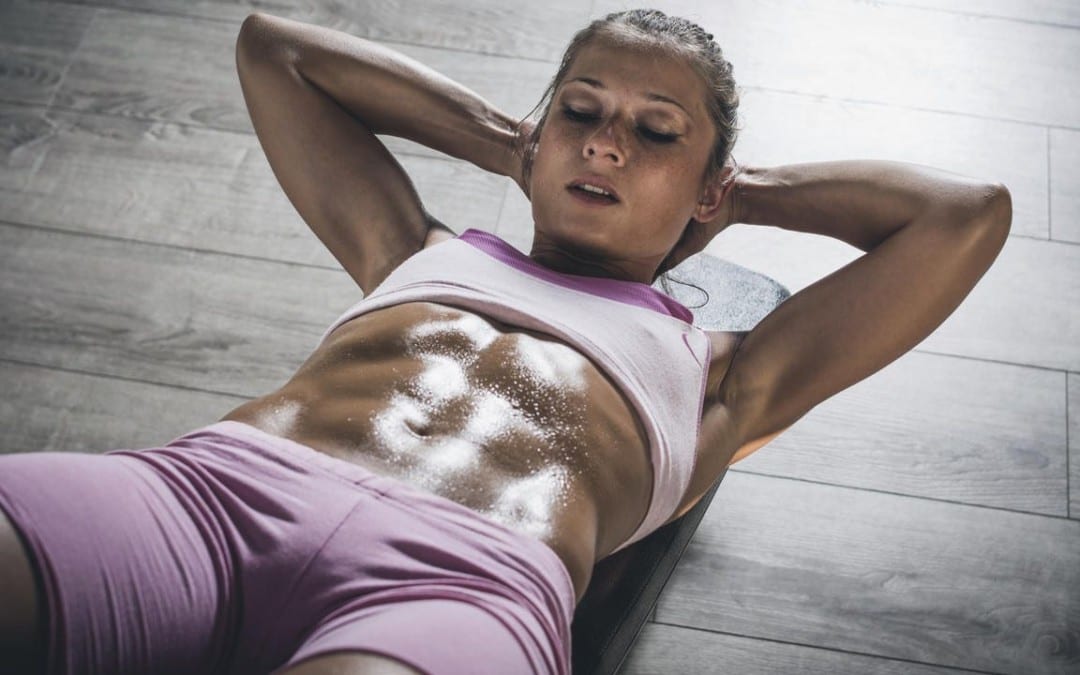
by Dr Alex Jimenez DC, APRN, FNP-BC, CFMP, IFMCP | Fitness, Health, Wellness
Let’s face it: whether you’re an experienced exerciser or totally new to working out, very few of us have the time to dedicate hours upon hours to our sweat sessions. That’s why it’s important to make every minute count. These proven tips and techniques will turn up your calorie burn during every workout you do, helping you bust through fitness plateaus and melt fat away in less time.
Pump up the jams
Pop in your earbuds, cue up your favorite playlist and get cranking. Listening to music is one of the easiest�and most fun�ways to rev up your calorie burn. When a team of University of Wisconsin researchers asked men and women to perform two 8-minute exercise sessions on a stationary bike, one with music and one in silence, the exercisers increased their average heart rate by 10 beats per minute, worked harder, and burned 7% more calories when they pedaled to tunes.
Pair up with an inspirational partner
Exercising with someone just a little better than you can bring out your calorie-scorching best. In one study, researchers from Kansas State University found that people who exercised with a partner they thought was a little fitter and stronger than they were increased their workout time and intensity by as much as 200%.
Let go of the rails
The more muscles you use, the more calories you burn. That means letting go of the rails on the treadmill and not leaning on the elliptical so your lower body and supporting core muscles have to work harder to keep you upright and in motion.
Put your arms into it
Race-walkers have an adage: As your arms go, your legs follow. If you want to speed up your pace and turn up your burn, pump your arms faster and your feet will follow. You�ll also engage more upper body muscles for another calorie burning bonus. Ditto for your elliptical machine sessions. Research shows that exercisers use more fat-burning oxygen when they get their arms into the action by using the elliptical machines handles than when they churn along with their legs alone.
Find your sweet spot
High intensity interval training (HIIT) may be great for getting a big metabolic bump for your exercise time, but because it’s so hard, many people burn out and don�t do it enough to see results. For a better, consistently higher, calorie burn, you want to hit your �sweet spot,� says Daniel Frankl, PhD, kinesiology professor at California State University, Los Angeles. �That�s the highest submaximal exercise intensity you can tolerate for 30 minutes.� You know you�re there when your breathing is slightly labored, but you can still talk in short sentences.
Wear some weights
Heavier people burn more calories because their bodies have to work harder to keep them in motion. You obviously don�t want to gain weight to burn calories, but you can fake it by wearing a weighted vest or adjustable weight garment like the TITIN Force Shirt System, a compression shirt that lets you slip up to 8 pounds of weight into 14 pockets. Research shows adding weight to your workouts can increase your calorie burn by 7% during moderate walks and more than 13% during step-climbing exercise.
Use the force
Gravity is an unexpected, but effective calorie burner�you have to work exponentially harder to fight its forces when you walk, bike, or run at an incline. Head to the hills: you can burn 50% more calories when you go from pancake-level terrain to a more challenging 6% incline.
Drink some java
Caffeine not only revs your metabolism, but also is a proven performance enhancer. Studies show that the energizing chemical found in coffee reduces your perception of exercise, so hard efforts feel easier and you can go harder, longer and burn more calories.
Cool your jets
Hydrate with icy-cold water for a one-two metabolic calorie burning punch. For one, downing a couple cups of cold water can raise your metabolism by about 5% as your body works to warm the fluid. Also drinking an icy beverage before exercising in the heat can help you feel fresher and crank out longer and harder efforts before fatiguing, so you can easily burn more calories.
Tune in, not out
Texting, watching TV, and flipping through a magazine are good ways to multitask while spinning away on the stationary bike or churning through an elliptical workout, says Frankl. �But they take your attention away your workout so you may not be giving it your best effort,� says Frankl. �Paying attention to your effort�your heart rate, your breathing, the sensation in your muscles�helps you maintain a steady effort so you can burn more calories,� he says.
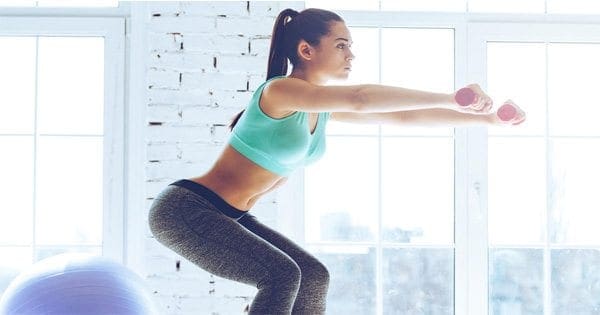
by Dr Alex Jimenez DC, APRN, FNP-BC, CFMP, IFMCP | Fitness, Health, Wellness
You do endless squats.�You�ve tried the booty band. You�ve danced along to Brazilian Butt Lift�DVD workouts. Yet somehow you still aren�t the proud owner of a tush that resembles the peach emoji.
The truth is, the appearance of your butt is partially out of your control,�says Harley Pasternak, celebrity trainer and Fitbit ambassador.��Genetics�is the number-one component of the size and shape of your butt,� he says. �Different ethnicities also have certain biological predispositions for adiposity in different parts of the butt, or different waist-to-hip ratios that give the butt and hips a particular look,� he adds.
Pasternak also notes that how you’ve used your glutes throughout your life may also dictate the natural development of your butt. �So someone who was a gymnast as a kid might have more developed glutes, or an easier time toning the glutes as they get older, than someone who maybe didn�t do any sports as a child,� he explains.
Now for the good news: Just because you can’t necessarily battle the natural curve of your booty doesn’t mean you can’t amp up the assets you have, he assures. Plus, there are so many benefits of developing a strong, toned tush that go beyond how it fills out your jeans. Having strong glutes can make you a better runner, improve your posture, and more.
So genetics aside, what else could be�stalling your dream derriere? There are other little�errors that people unknowingly make that can take the emphasis off of the glutes,�Pasternak says.�Make these�exercise and lifestyle adjustments to accelerate your results.
Don’t rely on the same old butt exercises
Certain moves that we often associate with the glutes�actually recruit other large lower-body muscles (namely�the quadriceps) to do most of the work.�”This tends to be�the case with basic body-weight squats and leg presses,” Pasternak says.
Instead, Pasternak recommends focusing more on unilateral movement, or working one side of the body at a time so that other large muscles in both legs don’t dominate.�”Unilateral training�will�allow you to access the�glutes more directly,” he says. Moves to work into your butt�routine: single-leg deadlifts, lunges, and lying single-leg hip thrusts.
Related: 4 Moves to Perk Up a Flat Butt
Add hills and speed drills to�your cardio
“Your butt is mainly fat. That�s just a fact,” Pasternak says�and fighting flab requires�a combo of cardio and a healthy diet. But you should be doing more with your�cardio than steady treadmill runs if you want to zero in on the�glutes, he says. “Steady running can actually�shorten the hamstrings and cause the glutes to become disengaged,” he says.
Instead, opt for walking or sprinting.�”Walking forces you into�a longer stride, which gives you the opportunity to access your glutes�better. Sprinting requires your knees to lift higher, which also fires up the glutes,” Pasternak explains.
For�even more effective butt-targeting cardio, add incline. “I think stairs are just the most underrated glute�blaster�there is,” Pasternak says. “I recommend that all my clients hit a step goal of 10,000 or 15,000 steps per day, and at least 1,500 of those should be on hills or stairs if you want to really want to tone the glutes fast.”
Sit less, stretch more
Putting all of your bodyweight on your butt for hours upon hours each day�can actually change the shape of it, Pasternak says.��Sitting also shortens and tightens the hip flexors, which impacts our ability to really activate both our�glutes�and core even when we’re not seated,” adds�physical therapist David Reavy, owner of React Physical Therapy in Chicago, Ill.
After a period of being sedentary (and especially before going from desk chair to workout), Reavy suggests doing�these three exercises to help lengthen the front of your body and�re-activate the glutes:
Mobilization backbend: Start in a split stance, with one foot slightly behind you and the heel slightly raised. Reach back with the arm of the same side and place your�fist on your sacrum. Lean back as far as you can and hold for a few seconds.�Repeat the movement on the other side.�Do about 10 reps on each side, bending back as far as you can each time.
Hip-flexor release:�Lay on your stomach and put a lacrosse ball under your psoas. Allow your bodyweight to release onto the ball as much as possible�without pain and lay�until you feel your hip flexor relax.
Hip thrusts:�Put your shoulders on a flat bench, heels on the ground. Using your glutes, lift your hips up to a bridge position, hold for a few seconds and lower your hips. Reavy suggests putting a resistance band around your thighs for added challenge: �This helps turn on your external rotators, which are part of your glutes, so you�ll be working your butt all the way around,� he says. Do three sets of 10 to 15 reps.

Call Today!
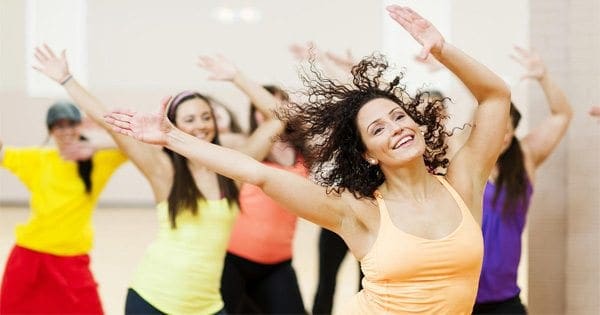
by Dr Alex Jimenez DC, APRN, FNP-BC, CFMP, IFMCP | Agility & Speed, Fitness, Health
Working out in the gym is great, but even the biggest treadmill loyalists can get bored on the moving belt. Our advice? Mix up your sweat sessions whenever you can. Introducing different types of movement into your fitness routine can actually help you get in shape faster because they challenge your muscles in new ways.
That�s why we love with this samba reggae dance workout. It�s a total change of pace from your standard barre class. And you don�t need to be a pro dancer to try the moves either.
Samba Workout
In the video, dance teacher Quenia�Ribeiro, of the�renowned dance school Ailey Extension demonstrates basic samba reggae moves that work up a solid sweat. Ready to get down and groove? Follow along for a heart-pumping, fat-blasting workout you�ll actually have fun doing.
RELATED: 12-Minute Dance Cardio Workout With Katie Austin�
- Samba reggae basic step: Standing with your feet slightly wider than hip-width, bounce from one foot to the other, moving your hips from side to side as you bounce.
- The snake: Adding on to the basic step, roll your upper body and arms in a snake-like movement to the right as you step to the right side. Clap as you return your torso to center, then repeat on the left.
- The shake: Standing with your feet slightly wider than hip-width, step your right leg out to the side as you sit into a squat and pop the hips forward and back. Continue to stay low as you repeat this movement on the other side, stepping out with the left leg. Stay loose in the hips as you alternate stepping out onto each leg.
- Cross-and-pull: From standing, step and cross the right leg over the left as you pull the right arm down in front of the body. Return to center and repeat on the left. Bounce from side to side as you alternate doing this cross-and-pull movement on the left and right.
- Window washers: Standing with your feet slightly wider than hip-width, shift your weight as you bounce your hips from one side to the other, holding your arms out to each side and moving them in quick circular movements, as if washing windows.

Call Today!
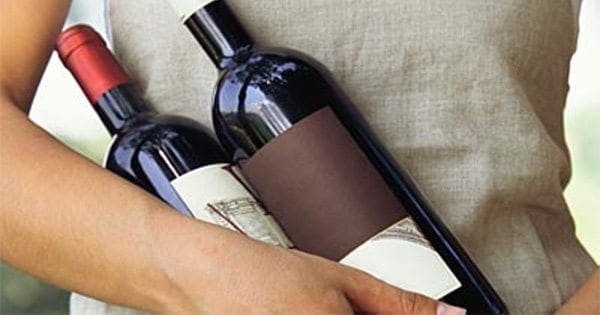
by Dr Alex Jimenez DC, APRN, FNP-BC, CFMP, IFMCP | Health, Integrative Functional Wellness, Integrative Medicine, Nutrition, Wellness
Let’s face it, sometimes there’s nothing better at the end of a long day than a glass of wine. But sipping much more than that can wreak havoc with your shape, and not just by adding hundreds of calories to your diet. Alcohol temporarily keeps your body from burning fat, explains integrative medicine specialist Pamela M. Peeke, MD, author of The Hunger Fix. The reason is that your body can’t store calories from alcohol for later, the way it does with food calories. So when you drink, your metabolic system must stop what it’s doing (like, say, burning off calories from your last meal) to get rid of the booze.
“Drinking presses ‘pause’ on your metabolism, shoves away the other calories, and says, ‘Break me down first!'” Dr. Peeke explains. The result is that whatever you recently ate gets stored as fat.
What’s worse: “Research has uncovered that alcohol especially decreases fat burn in the belly,” Dr. Peeke adds. “That’s why you never hear about ‘beer hips,’ you hear about a ‘beer belly.'”
So can a girl ever enjoy a drink without putting on pounds? Absolutely, if you imbibe the right way. In fact, large, long-term studies published in the Archives of Internal Medicine and International Journal of Obesity found that middle-aged and older women who drank moderately (about one drink a day) gained less weight over time than those who never imbibed at all; they were also less likely to become obese.
It’s a complex topic, but JoAnn Manson, MD, professor of medicine at Harvard Medical School and co-author of the studies, says that the moderate drinkers appeared to be more likely to compensate for the occasional drinks by taking in fewer calories from other sources and also tended to be a little more physically active. (In other words, they didn’t get blitzed on margaritas, then dive in to a bowl of fried ice cream.) What else beyond basic exercise and calorie-counting can keep happy hour from turning into hefty hour? Health dug into the research and grilled the experts on how you can have your sips and jeans that still zip.
Rule #1: Always eat when you drink
While the Harvard research suggests it’s wise to factor in those cocktail calories, it’s actually more important to eat right than to eat less, the experts stress. Skimping on food in order to “make room” for drinks will only backfire and send you straight to the bottom of the candied nut bowl. Here’s why: Most cocktails are loaded with simple carbohydrates, “so during a night of drinking, people end up with soaring blood sugar, followed by a ‘crash’ that leaves them ravenous,” says Jason Burke, MD, an anesthesiologist and hangover researcher who runs a hangover treatment clinic in (where else?) Las Vegas.
You can help counteract that effect by nibbling foods that provide long-lasting energy. “Before you go out, have dinner or a snack with protein, fiber, and healthy fat,” says Karlene Karst, RD, author of The Full-Fat Solution. “They stabilize your blood-sugar levels without slowing down your metabolism.” Karst recommends Greek yogurt with berries, almond or hemp butter with an apple, or a protein shake. An added benefit of grabbing a bite beforehand, she says, is that that Pinot or appletini will be absorbed more slowly into the bloodstream, minimizing its diet-damaging effects.
In addition to revving your appetite, tippling also makes you lose your eating inhibitions (“I only live once�I’ll have the steak frites!”). “It temporarily impairs the prefrontal cortex, the smarty-pants part of the brain that allows you to think clearly and rein in impulsivity,” Dr. Peeke says. “So after a certain amount of alcohol (and it’s different for everyone), you’re going to feel yourself not caring and letting it rip with food and probably drinks.” A cocktail (or three) can make you forgetful, too�as in, forgetting that the Death by Chocolate dessert is not on your eating plan.
The trick is to have an easy-to-follow strategy in place before you take that first sip. Scout out the bar or restaurant menu ahead of time and note your picks on your phone. Then set an alert to remind you to order wisely�that way you won’t have to think too much (or rely on that alcohol-impaired prefrontal cortex!) to stay on track.
As with your pre-partying meal, go for something with fiber, protein, and a little bit of healthy fat to help control blood-sugar levels and make you feel satisfied, Karst says.
Rule #2: Know that some drinks make you hungrier than others
When it comes to waist-friendly cocktails, the simpler the drink, the better. Not only do the sweet-and-fancy ones tend to have more calories, but the additional sugar can make you even hungrier: Your blood sugar skyrockets higher than it does on beer, wine, or a shot of something, making the plummet (and the resulting cravings) worse.
And then there are the calories! Booze has 7 calories per gram, making it the second-most calorie-dense macronutrient. (That’s just below pure fat, which has 9 calories per gram.) This means a measly 1.5-ounce jigger of vodka has almost 100 calories. Mix that up with some club soda and lime, and it’s a reasonable tipple, but when you start tossing together a whole bunch of different liquors�whether it’s a hipster fizz made with bourbon, elderflower liqueur, and house-made bitters, or a dive-bar Long Island iced tea loaded with vodka, rum, tequila, and gin�it really adds up (to the tune of 300 calories, in the case of a Long Island).
Even simple mixed drinks like rum-and-Cokes and screwdrivers pack extra calories because of the sugary soda and juice. “So if you’re going to drink, have something straight up and simple like wine or beer,” Dr. Peeke advises. Any wine or beer works, but to trim about 10 calories per glass, choose a ros� or white wine instead of a heavier red. A whole pint of a dark beer is around only 170 calories (compared with 195 for the same amount of regular beer) and may leave you feeling fuller than, say, Champagne, because it’s so starchy and rich, Karst notes. Vodka, gin, or bourbon with club soda and a twist are pretty good bets, too. Club soda is calorie- and sugar-free and dilutes the alcohol and its effect on your cravings. Avoid juices, liqueurs (which are sweet and syrupy), colas, tonics, and super-sugary bottled mixes like the ones for a lot of bar-made margaritas and daiquiris.
Rule #3: Stick to a drink or two, tops
One drink a day is the widely accepted definition of moderate drinking for women, but there’s a misconception among some bar-hoppers that you can go without alcohol all week and save your seven drinks for the weekend. “That’s the worst thing you can possibly do for your weight,” Dr. Peeke says. (And, of course, for your health.) “It has a much bigger effect than one drink a day.”
When you down three or four drinks in one night, your body has many hundreds of alcohol calories to process before it can continue to break down food calories or stored fat. Plus, all those drinks throw your blood sugar even more out of whack so you’re hungry as heck�and because you’re tipsy, your prefrontal cortex is misfiring and you now have zero compunction about ordering the fried mozzarella sticks with a side of ranch (and keeping them all for yourself). The extra calories alone are enough to pile on the pounds; have four drinks every Saturday night and you’ll be up about 10 pounds in a year.
Rule #4: Beware that gnawing, starving feeling the next day
The morning after poses a new diet challenge. As if a hangover weren’t punishment enough, you’re fighting cravings for large amounts of cheesy, greasy fast food. Part of the problem is that you’re dehydrated (don’t forget, alcohol is a diuretic), and that can make you feel even hungrier, Karst notes. But that’s not the only thing at play. “The body needs energy to resolve the effects of a big night of drinking, so it wants the richest source of energy it can find, which is fat,” Dr. Burke says. “Also, greasy foods tend to settle the stomach a bit.”
To avoid that: When you’re out, drink a big glass of water for every drink you have. Then, before going to bed, have some more, along with a snack that is high in fiber and protein such as high-fiber cereal or oatmeal, Dr. Burke suggests. “You’ll get important nutrients into the body that were lost during alcohol consumption,” he adds. “Plus, foods rich in fiber stay in the stomach longer, so you’ll be less prone to hunger in the morning.” With any luck, you’ll also be less likely to overdo it in the a.m., ensuring your figure won’t have to pay the price for a night out.
















